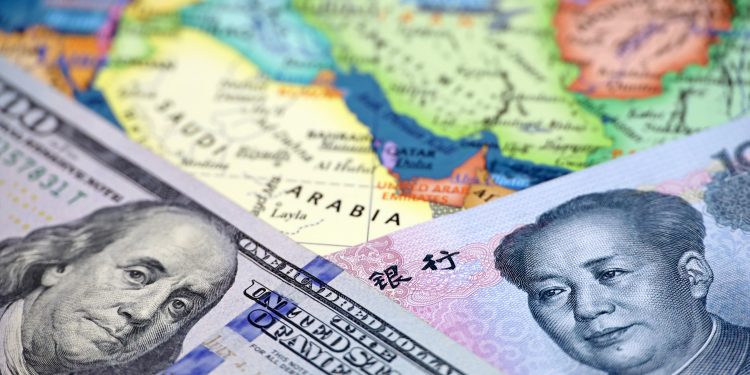China has further integrated into the global capital market by launching Asia’s inaugural exchange-traded fund (ETF) that is designed to mirror the performance of Saudi Arabia’s major corporations, marking a significant step in the burgeoning financial relations between the two nations.
Approval has been granted by the China Securities Regulatory Commission for the listing of two feeder funds on the Chinese mainland – the Huatai-Pinebridge CSOP Saudi Arabia ETF QDII and the China Southern CSOP Saudi Arabia ETF QDII. These funds are modeled after the Hong Kong-based CSOP Saudi ETF and will be overseen by Huatai-Pinebridge Fund Management and China Southern Asset Management respectively.
These cross-listed ETFs are part of the Qualified Domestic Institutional Investor (QDII) program, which permits institutional investors to partake in foreign securities markets within a set investment limit. This initiative officially opens the doors for China’s retail investors to diversify their portfolios with foreign equities and bonds.
“It’s the first of its kind for mainland investors,” noted Ding Chen, CEO of CSOP Asset Management, emphasizing the product’s alignment with the Belt and Road Initiative and the high interest it has garnered in the market.
Last year, the CSOP Saudi ETF made its debut in Hong Kong. It is structured to track the FTSE Saudi Arabia Index, which as of the end of May, boasted a market capitalization of US$303.5 billion. The index’s composition is heavily weighted by top firms such as Al Rajhi Banking, Saudi Aramco, Saudi National Bank, ACWA Power, and Saudi Basic Industries, which collectively account for 43 percent of its value.
The cross-listing of the ETF is anticipated to attract China’s vast pool of 200 million retail investors, who have been showing a heightened interest in international ETFs. Amidst a sluggish domestic stock market and a cooling property sector, investors are looking to spread their risk and enhance their investment portfolios.
While the CSI 300 Index, tracking China’s leading companies in Shanghai and Shenzhen, has seen a modest rise this year, the S&P 500 and the Nikkei 225 have achieved record highs. In contrast, the FTSE Saudi Index has experienced a 5.9 percent downturn in the same period when measured in US dollars, as per Bloomberg data.
The introduction of these ETFs coincides with a period of reinforced financial cooperation between China and Saudi Arabia, with both countries working towards the development of additional investment products and opportunities for accessing each other’s capital markets.
Last September, the Shanghai Stock Exchange and Saudi Tadawul Group, Saudi Arabia’s stock exchange operator, reached an accord to work on cross-listings and exchange initiatives involving fintech, data sharing, and environmental, social, and governance (ESG) concerns.


